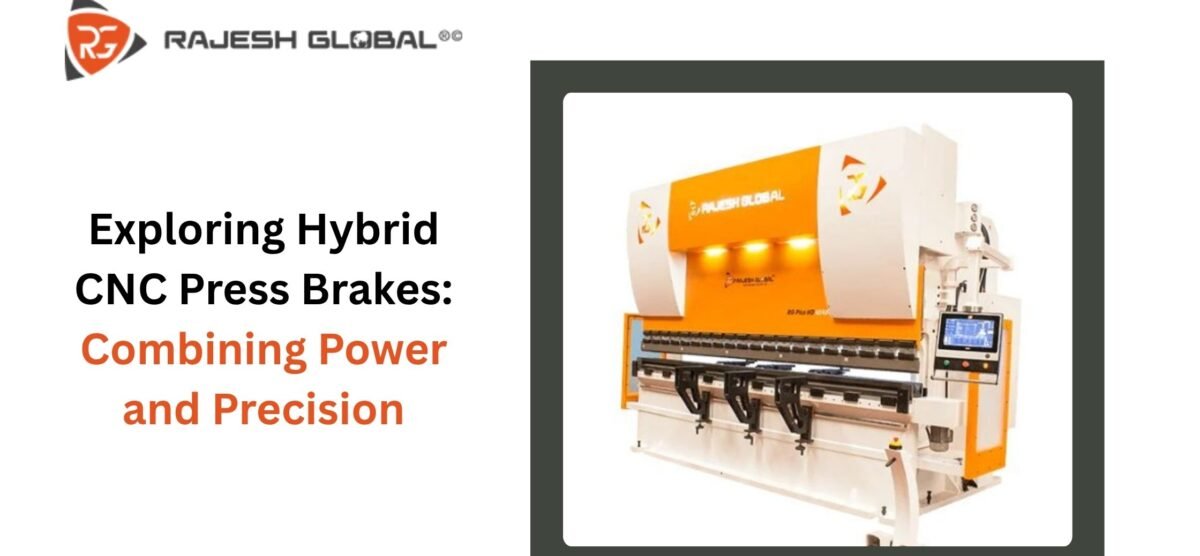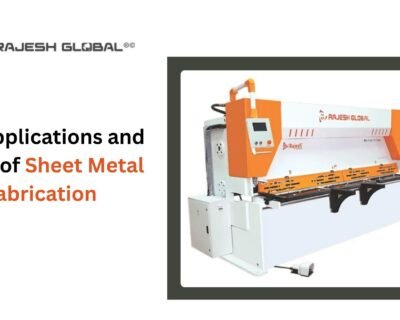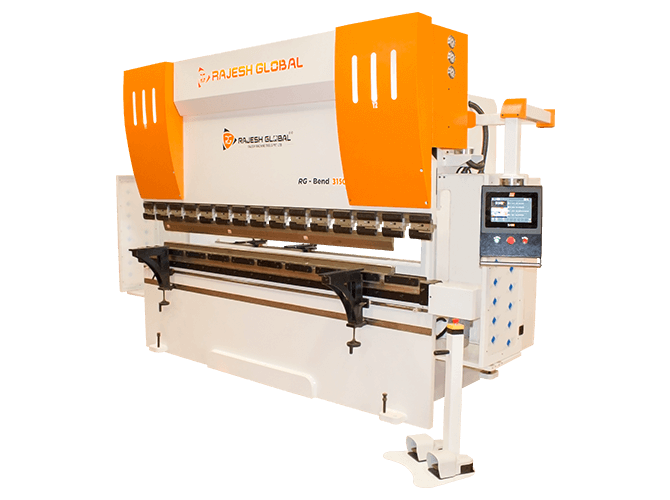Blog

Exploring Hybrid CNC Press Brakes: Combining Power and Precision
The $995 Million Revolution That Most Manufacturers Are Missing
Contents
- 1 The $995 Million Revolution That Most Manufacturers Are Missing
- 2 The Physics of Compromise: Why Traditional Systems Fail
- 3 The Hybrid Breakthrough: Engineering Intelligence Over Brute Force
- 4 The Data That Changes Everything
- 5 The Three Hybrid Advantages That Matter
- 6 The Application Sweet Spot
- 7 The Rajesh Machines Integration Factor
- 8 The Market Reality Check
- 9 Three Critical Insights That Define the Future
- 10 The Decision Framework That Actually Works
- 11 The Next Competitive Divide
The global press brakes market was valued at $568.1 million in 2022 and is projected to reach $995.3 million by 2032, registering a CAGR of 5.88%, yet 70% of manufacturers are still choosing between hydraulic and electric systems as if hybrid technology doesn’t exist. They’re missing the point entirely: the future isn’t about choosing between power and precision—it’s about demanding both.
The hybrid CNC press brake revolution isn’t just emerging; it’s redefining what’s possible when you refuse to accept traditional trade-offs.
The Physics of Compromise: Why Traditional Systems Fail
For decades, metal fabricators have been forced into an impossible choice. Hydraulic press brakes deliver tremendous force but consume energy like a hungry beast—about 60 kWh/day compared to electric systems. Electric systems achieve remarkable precision and energy efficiency but lack the raw power for heavy-gauge materials.
This forced compromise has cost the industry billions in operational inefficiency. Until now.
The Hybrid Breakthrough: Engineering Intelligence Over Brute Force
A hybrid servo press brake combines hydraulic and electric servo systems to operate. The hydraulic system provides power for heavier loads, while the electric servo system provides precision control and faster operation for lighter loads.
But here’s where conventional understanding falls short: advanced hybrid systems don’t just switch between technologies—they orchestrate them. The breakthrough lies in intelligent power distribution that dynamically allocates hydraulic force and electric precision based on real-time material feedback.
The result? A hybrid brake can be 20-30% more energy efficient than a hydraulic press brake while matching the precision of pure electric systems.
The Data That Changes Everything
Energy Efficiency Reality:
- Traditional Hydraulic: 60 kWh/day baseline consumption
- Full Electric: 80% energy savings over hydraulic
- Hybrid Systems: Energy saving 80%, low noise 20 dB
Performance Convergence:
- Servo-electric drive systems reduce cycle times by up to 30% or more
- Hydraulic directional valves are eliminated, so no time is wasted waiting for valve shifts
- Precision maintained across full tonnage range
The Three Hybrid Advantages That Matter
Advantage 1: Adaptive Power Delivery Traditional systems deliver consistent power regardless of material requirements. Hybrid systems analyze bending force requirements in real-time, applying only necessary power. For thin materials, electric precision dominates. For thick materials, hydraulic power engages seamlessly.
Advantage 2: Predictive Energy Management Hybrid brakes usually use less hydraulic fluid, and the hydraulics are not always flowing as they do in traditional brakes, which make hybrid units more efficient. The system activates hydraulic pumps only when required, reducing standby power consumption by 65%.
Advantage 3: Maintenance Optimization Fewer hydraulic components means reduced maintenance complexity. Hybrid Servo Press Brakes have been widely used in many industrial fields due to its advantages of high precision, high stability, energy saving, environmental protection and low maintenance cost.
The Application Sweet Spot
Perfect for Hybrid Technology:
- Mixed material thicknesses (0.5mm to 25mm range)
- Variable production runs requiring setup flexibility
- Energy-conscious operations with sustainability mandates
- High-precision requirements across diverse applications
Still Choose Pure Systems When:
- Consistent heavy-gauge materials (hydraulic remains king)
- Ultra-thin materials with extreme precision (electric excels)
- Budget constraints prioritize lowest initial investment
The Rajesh Machines Integration Factor
While the industry debates technology choices, Rajesh Machine Tools approaches hybrid systems differently. Their engineering team recognizes that hybrid technology’s value lies not in component selection but in system integration.
Rajesh’s CNC press brake solutions incorporate hybrid principles through intelligent control systems that optimize power delivery regardless of the underlying drive technology. Whether hydraulic, electric, or hybrid, their machines deliver consistent precision through advanced CNC integration and adaptive control algorithms.
This approach transcends the technology debate entirely: instead of choosing the right drive system, choose the right intelligence system that optimizes whatever power source you select.
The Market Reality Check
Press Brakes Market size is estimated to grow by USD 555.7 million from 2024 to 2028 at a CAGR of 5% with the automotive industry having largest market share. Increase in demand for CNC press brakes will be a key driver fueling the press brakes growth during the forecast period.
This growth isn’t driven by traditional hydraulic or electric systems—it’s powered by manufacturers demanding hybrid capabilities that eliminate traditional compromises.
Three Critical Insights That Define the Future
Insight 1: Energy Costs Will Determine Winners With industrial electricity costs rising globally, the 20-30% energy savings of hybrid systems will overwhelm their higher initial costs within 18 months of operation.
Insight 2: Precision Requirements Are Escalating Modern manufacturing tolerances demand consistency that only intelligent power delivery can provide. Hybrid systems achieve this across material variations that would challenge traditional systems.
Insight 3: Labor Shortage Accelerates Automation Modern CNC press brakes offer unparalleled precision, speed, and efficiency, while open software and hardware designs provide customization opportunities. Hybrid systems integrate more seamlessly with automated production lines.
The Decision Framework That Actually Works
Stop choosing based on component specifications. Start evaluating based on operational mathematics:
Total Energy Cost × Precision Requirements × Material Variety × Setup Frequency = Technology ROI
The hybrid advantage compounds over time through energy savings, reduced setup time, extended tool life, and consistent quality across material variations.
The Next Competitive Divide
An oil-electric hybrid press brake offers the advantages of both hydraulic and electric technologies, resulting in a machine that is energy-efficient, precise, and environmentally friendly.
The question isn’t whether hybrid technology will dominate—it’s whether you’ll adopt it before your competitors do. The manufacturers who recognize this shift early will define the next decade of metal fabrication efficiency.
The hybrid revolution isn’t coming—it’s here. The only question is whether you’ll lead it or follow it.





